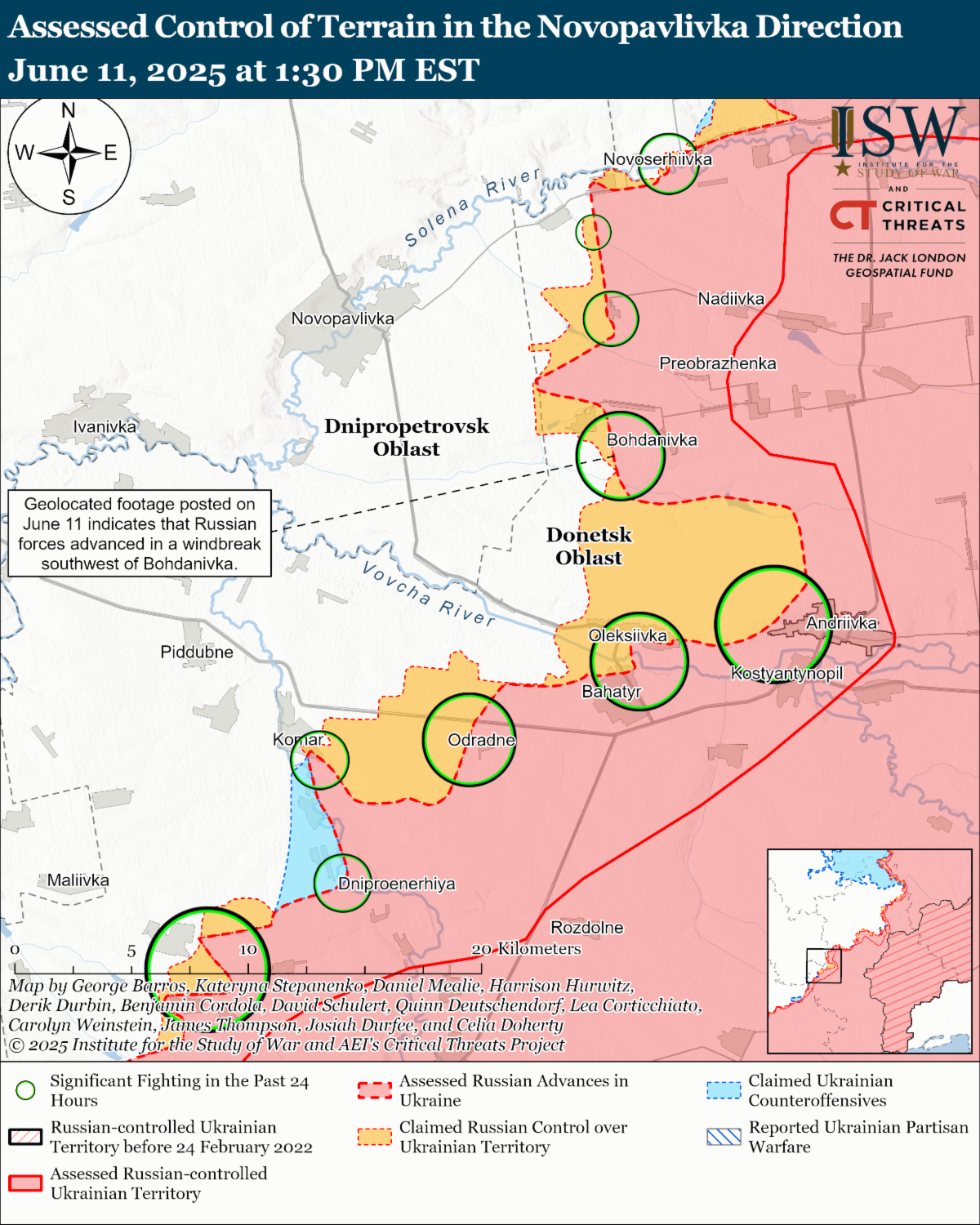US Defense Secretary Pete Hegseth stated on June 10 that the United States intends to reduce its budget for the purchase of weapons for Ukraine in 2026. Hegseth did not specify the extent of the planned cutbacks. Hegseth stated that "a negotiated, peaceful settlement" is in the best interest of Ukraine, Russia, and the United States but that "the word victory," as well as the path to victory and to peace, have not been clearly defined.
Reducing US military aid to Ukraine will neither lead to a sustainable peace in Ukraine nor compel Russian President Vladimir Putin to reassess his theory of victory. Putin's theory of victory posits that the Russian military can sustain creeping, incremental advances on the battlefield longer than Ukrainian forces can defend and longer than the West is willing to support Ukraine. ISW continues to assess that Western military aid, particularly that which only the United States can provide rapidly and at scale, remains crucial in enabling Ukrainian forces to make decisive gains on the battlefield and pressuring Putin to reassess his theory of victory. Battlefield gains that change Putin's calculus would force Russia to engage in constructive negotiations to ensure a peaceful resolution to the war. A reduction in US aid to Ukraine risks giving Russia greater advantages on the battlefield and would likely embolden Putin to continue his war and strengthen his belief that Russia can conquer Ukraine, which is incompatible with US President Donald Trump's stated goal of ensuring an enduring peace in Ukraine.
Key Takeaways:
- Reducing US military aid to Ukraine will neither lead to a sustainable peace in Ukraine nor compel Russian President Vladimir Putin to reassess his theory of victory.
- The Kremlin continues to attack Ukraine using rhetoric presenting an anachronistic reading of Ukraine's history, denying the existence of an independent Ukrainian language and culture, and discrediting the Ukrainian government.
- Russian officials are also attempting to rhetorically split Ukraine from its Western partners and advocating for an escalation of Russian strike tactics in Ukraine as part of wider efforts to intimidate the West into weakening its support for Ukraine.
- Russian officials continue to promote anti-NATO and anti-Western rhetoric, likely as part of the Kremlin's continued efforts to prepare Russian society for a potential future war against NATO.
- Ukrainian forces continue to strike Russian military and defense industrial targets in the Russian rear.
- Ukraine and Russia exchanged the bodies of killed in action (KIA) soldiers on June 11, in accordance with agreements previously reached during talks in Istanbul.
- Ukrainian forces advanced near Borova. Russian forces advanced near Chasiv Yar, Toretsk, Pokrovsk, and Novopavlivka.
| 




 [ISW] 러시아 점령 업데이트, 2025년 6월 12일
[ISW] 러시아 점령 업데이트, 2025년 6월 12일
 [국방부] "나라를 위한 헌신을 잊지 않고 전쟁 영웅을 끝까지 찾...
[국방부] "나라를 위한 헌신을 잊지 않고 전쟁 영웅을 끝까지 찾...